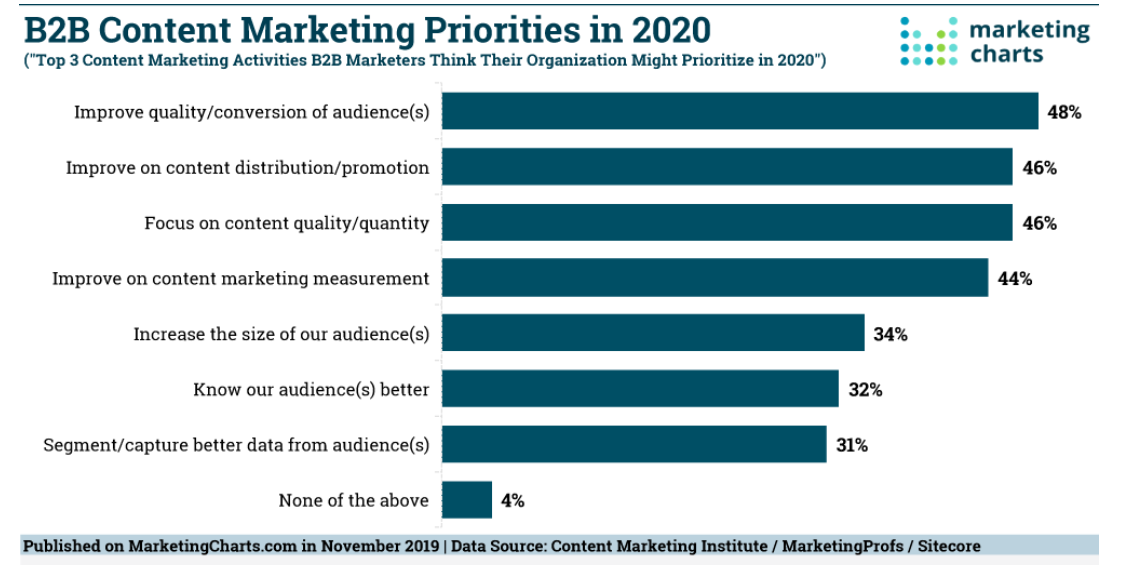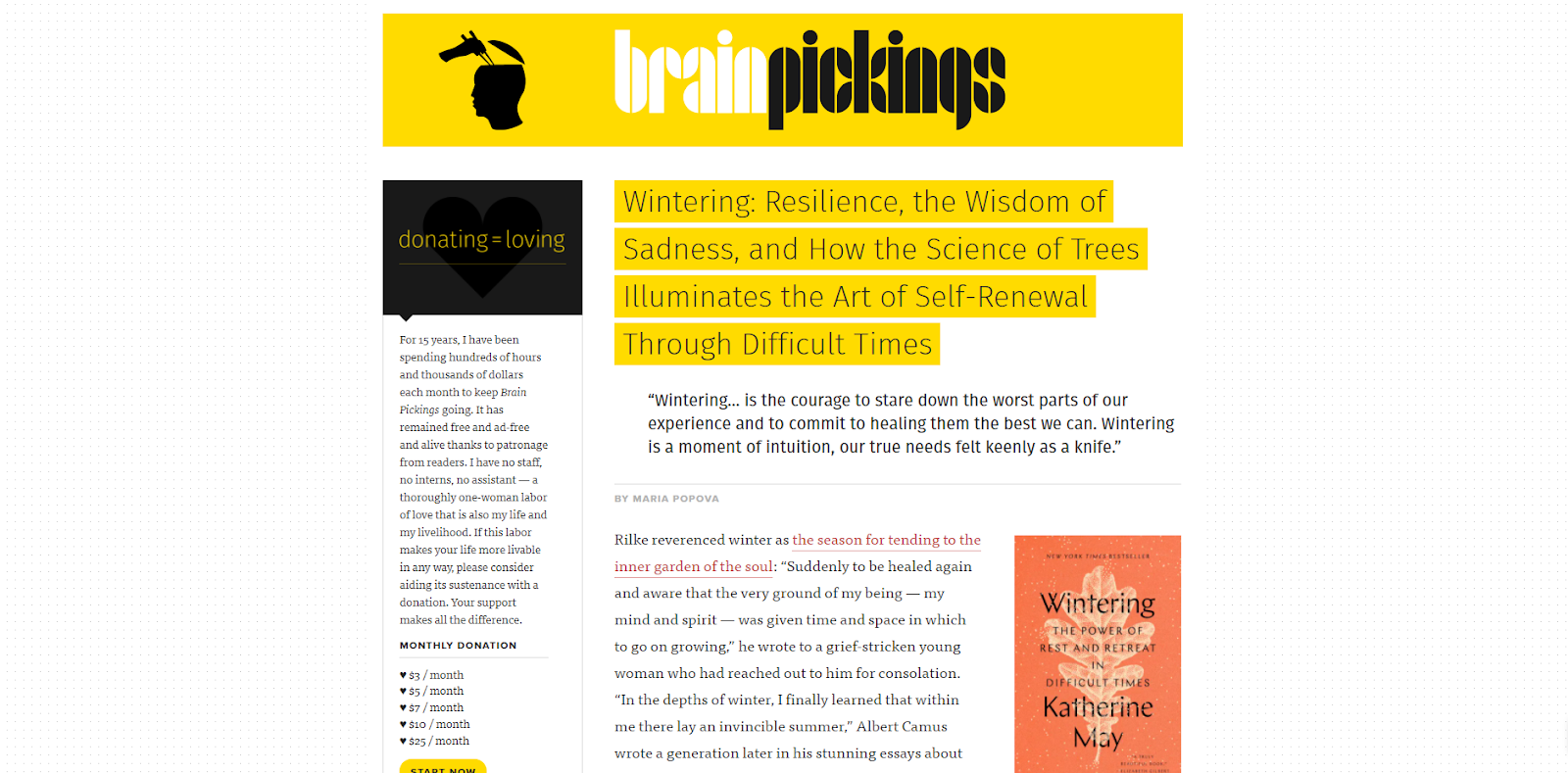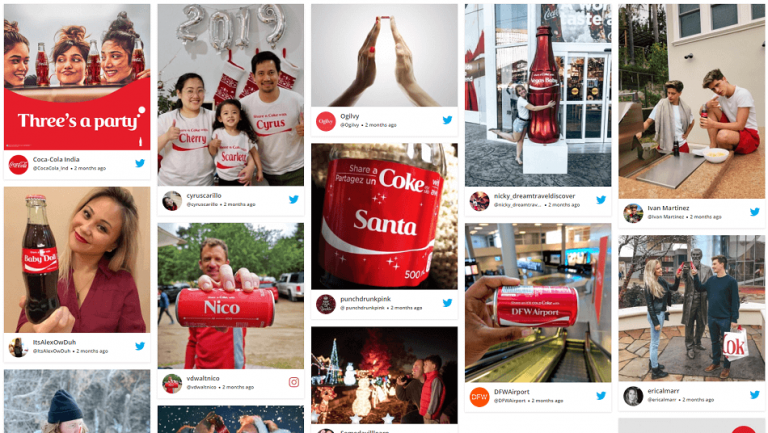
Content curation has the potential to turn your website or brand into an engaging and value-adding entity without the need for directly committing the time and resources towards producing your own texts or multimedia. But how can it be developed for SEO purposes?
The act of curating content isn’t too different from that of a curator’s role at a museum, where they choose the most important artifacts and artworks to display to the public. As a content curator, your task is to pick only the best content to share with your audience.
(Image: Omnicore Agency)
As the chart above shows, the vast majority of marketers focus on factors that leverage conversions, improve the distribution of quality content, and benefit the measurement of content marketing – all of which can be better leveraged by choosing great content that was created elsewhere for reappropriation.
But how can curated content be useful for driving SEO? Let’s take a look at some of the best actionable ways that you can make content work for your business:
Discovering Great Content
Content curation doesn’t have to be a manual process, but while platforms like Scoop.it! are dedicated to automating the curation process, it’s important to use your own knowledge of your customers and your ability to identify quality content to find winning formulas.
This means that before anything is published, curators need to collect all the information they need about topics that they’re going to create and only then start selecting the highest quality pieces.
The very best way to ensure that you’re collecting the best content is by listening. For example, if somebody would like to start curating a specific SEO topic, they should start regularly visiting sites like Moz, Search Engine Land, Search Engine Watch, and Search Engine Journal and examining the websites or blogs active within those sites. By selecting the most engaging and interesting content they can more appropriately track their own content production about specific topics through RSS feeds and social media platforms like Twitter.
Be sure to study social sentiments towards your industry and use it to identify the type of content that users look for when they run search engine queries related to your industry.
The Value of Networking
Sharing other people’s content is also a great way of getting noticed by them – particularly when your post could send some more traffic in their direction.
If you identify some valuable content that’s emanating from another resourceful and reliable website, let them know when you share their content with your followers – but avoid asking for anything in return for this free promotion.
The example above shows just how powerful content curation can be. Here, we can see content being adapted to convey the thoughts of industry leaders in a complementary way whilst building a strong narrative within the website’s article. All references are linked accordingly, meaning that the success of the article will drive the success of the linked website.
When you’re curating another author’s content, it could be worth letting them know that you found their writing especially valuable and that you’ll be following more of their work to see what they’ll share in the future. This could, in turn, help you to forge meaningful relationships where you can build links to and from the websites and social accounts of other thought leaders in your industry.
This act of mutual backlinks can significantly expand your network and help Google’s crawlers to better understand the industry that you’re immersed in than attach value to the content that you create.
This approach could be particularly valuable if you’re a startup or a blogger who is still building your following and reputation. At the early stage in your industry lifecycle, building a network can be the most significant driver for growth.
Let Your Audience Optimize Your Content
Audience participation can pave the way for some of the greatest examples of curated content. Instead of scouring the internet for the topics that your target market is asking Google about, you can instead invite them to submit their questions to you.
The beauty of this form of curated content is that you can control what you answer and the type of questions that you post. If you have a relatively large audience already, it’s likely that you’ll have an extensive choice of options in this regard.
Pick questions that you’re naturally knowledgeable about and those that are relevant to your industry. This approach allows you to gain an insight into the sorts of things that people in your industry want to know and it can work wonders for your website, blog, or social media profile to better rank for other users who want to know the same thing.
Acting as a form of live FAQ section of a website, you can choose to answer questions by relevance, or by how frequently they’re asked. If you find multiple members of your audience asking similar questions – this indicates that there’s little existing content that answers their queries and that you may be well-placed to rank highly in SERPs if you can answer their question clearly.
(Image: Backlinko)
Above, we can see an example of an industry leader latching on to this form of content curation to fill his blog with relevant content that’s optimized to be visible on search engine results pages.
Don’t Be Afraid to Get Visual
Visual content is a different form of curated content, but it still has the potential to accelerate your SEO and appeal to your audience in a different way.
Most notable, this form of content is easily digestible, very linkable, and shareable. This approach also offers a significant level of flexibility when it comes to how your business can utilize it.
Here, if you sell a product or service, it’s possible to offer users a free incentive to submit images of themselves using your product for you to use or repurpose. You could also compile the best images of a relevant industry event or occurrence.
For instance, the newspaper, The Boston Globe is especially effective at this with its ‘The Big Picture’ section, which is a compilation of the best photographs taken by its team of staff – ordered by month.
(Image: Taggbox)
One of the most memorable pictorial forms of content curation came from Coca-Cola’s ‘Share a Coke With…’ campaign, which invited users to find Coca-Cola products with their name printed on the side and share a selfie on social media.
The campaign creates a social proof of Coca-Cola products where huge volumes of customers were suddenly sharing their advocacy of the brand simply by joining in.
While this volume of engagement may not be achievable for smaller businesses, it’s still possible to showcase the best submissions of users making the most of your products on social media or on your website. With the popularity of visual search rising, it could be a great tactic to curate images to drive more traffic to your site and win more conversions.
The Importance of Performance Monitoring
Naturally, it’s imperative that you continuously monitor your content curation performance. You may have conducted a wealth of research regarding your target audience, but it’s worth very little if your subsequent SEO efforts aren’t leveraging the conversions that you were aiming for.
With this in mind, be sure to utilize analytics engines like Google Analytics or Finteza to provide rich insights into how your new visitors are interacting with your pages. If your curated content is leading traffic to a landing page, how many of them are converting? If your content attracts users from social media to a blog page, are they exiting your website after they’re done, or are they looking at more of your content?
If you’re seeing higher volumes of bounce backs or fewer conversions, it could be that the content you’re curating isn’t a great fit with the users you want to attract to your site.
Here, it pays to remember your key demographics. Industry websites can attract different users of different ages and with different expectations. They may be interested in roughly the same products and services, but they’ll use different brands to deliver on their expectations.
By curating content, you can leverage the cream of the crop of relevant, actionable, and engaging content and repurpose it to help drive conversions to your website. Through the right implementation, it’s possible to build a vibrant network of contacts through backlinks and add value to your brand.








